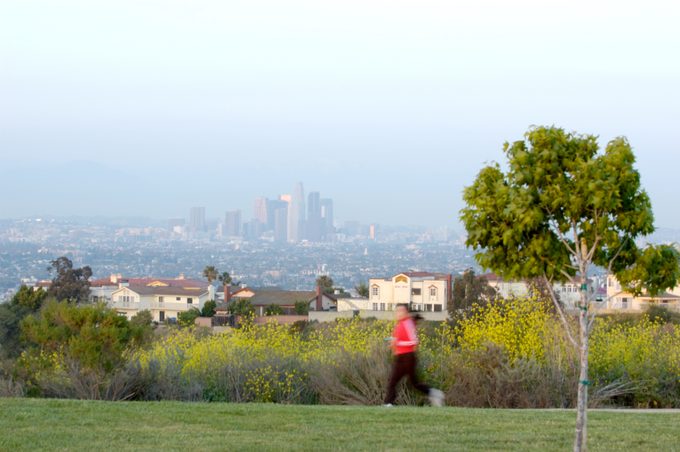Pollution-proof your skin
Everyday air pollution is an inescapable consequence of city living. Here’s how to protect yourself

A typical urban outing can include inhaling car exhaust, second-hand smoke or the oh-so-pleasant blast of hot air from a sewer grate. Gross!
The term ‘air pollution’ refers to harmful gases or particles in the air from pollutants such as car exhaust, ozone and industrial emissions. It’s bad for us: Inhaled pollutants can be absorbed into the blood and travel throughout the body, potentially damaging the heart and other organs. Ground-level ozone and particulate matter can cause inflammation in the lungs; Studies have shown that even small increases in air pollution can worsen respiratory diseases such as
allergies, asthma, emphysema and chronic, obstructive pulmonary disorder (COPD).
And, while it’s rare, there’s evidence that prolonged exposure in areas of high pollution increases death rates. A Health Canada study of eight major cities in this country estimated that almost 6,000 people die each year because of both the short- and long-term effects of air pollution.
It’s well-known that this kind of pollution poses a hazard to our health. But what about the effects on our skin? Have you considered what air pollution is doing to your complexion?
‘Things like smog, chemical pollution and cigarette smoke all contribute to skin damage,’ confirms Dr. Julia Carroll, a dermatologist and co-founder of Compass Dermatology in Toronto. Some of the particles in pollutants are able to penetrate the skin, where they release free radicals that trigger oxidative stress. ‘These small particles bounce around the skin causing repeated damage: They disrupt the skin’s barrier, and damage elastin and collagen, which speeds up signs of aging including wrinkles,’ explains Carroll.
Other premature aging effects include brown spots, broken blood vessels and skin sagging. Pores can become enlarged and complexion may look dull or sallow. Carroll also notes that air pollution can affect skin’s sensitivity, and cause inflammatory or allergic reactions. ‘These show up in skin as redness, eczema and acne.’
Thinking of moving to greener, smog-free pastures? Relocating won’t do you much good: Turns out that air pollution can affect both urban and rural areas. It’s unavoidable. But if you can feel residue on your face on a muggy day, or see black soot on your washcloth as you cleanse at night, you need to take action. Here are some steps you can take.
First, it’s crucial to properly cleanse your face in order to get rid of any traces of pollution on the skin. ‘The most important thing is to wash your face every night,’ says Carroll, who recommends using a gentle cleanser and soft cloth. She also suggests using a Clarisonic brush, since the tool can remove traces of pollution better than traditional cleansing.
Moisturizing is also key. ‘This will protect your skin from particulate pollution by trapping it in the product,’ explains Carroll. And consider adding an anti-pollution product to your routine. Clarins’ daytime products contain a complex that helps prevent signs of premature skin aging associated with pollution. (The brand also has a line of anti-pollution make-up.)
Up your pollution-protecting game by using an antioxidant cream or serum, which can counteract the effects of day-to-day stressors. ‘Research has shown that antioxidants neutralize free radicals,’ explains Carroll. She recommends products that contain l-ascorbic acid (vitamin C) in particular’try Skinceuticals CE Ferulic antioxidant-based serum.
Check your city or town’s air quality conditions and avoid being outside during peak pollution. (This is particularly crucial if you plan to exercise outdoors: breathing deeply and rapidly allows more pollution to enter the lungs, potentially causing coughing or difficulty breathing.)
Air pollution is harmful, but is it as bad for our skin as the sun? Carroll says the jury is still out, but evidence is leaning that way: ‘Pollution may be the new UV when it comes to skin damage.’




